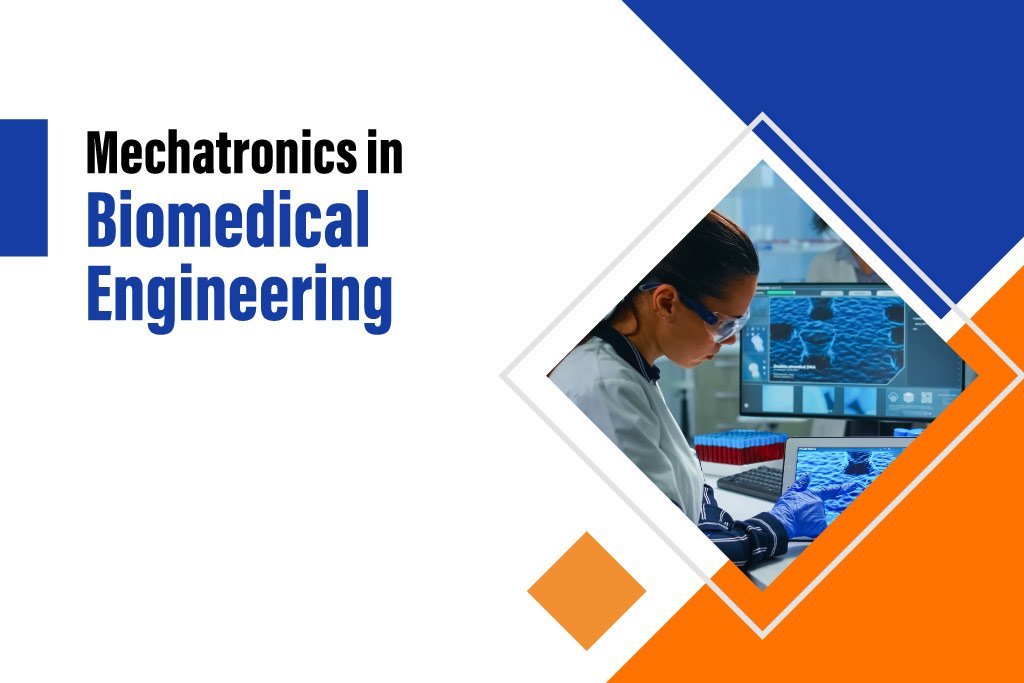
Biomedical engineering describes a new solution and approach for using mechatronics which can design innovative, accurate, excellent medical devices and be able to optimize the traditional medical instruments. Biomedical engineers need to apply a comprehensive branch of engineering which allows them to resolve problems in biology and medicine. The best placement colleges in Coimbatore let the students develop knowledge about the technologies and systems which directly contribute to diagnosis, treatment and prevention of diseases. You may find the innovative bioengineering developments with the adaption of new technologies and recent advancements in artificial intelligence. This article highlights the emerging trends in mechatronics which biomedical engineers should be aware of.
Recent developments of Mechatronics in Biomedical engineering:
Genomic engineering: For a significant part of modern medical history, healthcare professionals have made decisions about patient care based on what they believe the typical patient would do. Research and studies published in medical journals served as the foundation for standard practices. However, precision medicine is focused on the unique aspects of human health, including a patient’s environment, genes, diet, and exercise routine. With the revolutionary gene-editing technique CRISPR-Cas9, biomedical engineers can modify, add, or remove genetic material at specific genomic locations. It works similarly to molecular scissors, directing a sequence of RNA to the particular DNA sequence requiring editing.
Nanotechnology: Because nanoparticles can deliver drugs precisely to specific locations, like tumors, biomedical engineers are looking into them for drug delivery applications. These targeted delivery strategies lessen the adverse effects on healthy cells while increasing the effectiveness of medication. Using nanotechnology to diagnose single-molecule systems is known as nano diagnostics. Infectious diseases can be quickly diagnosed with nanomaterials, frequently prior to the onset of symptoms, by identifying disease biomarkers in molecules. This technology holds great potential for regions where many patients cannot afford the slow, inaccurate, and expensive traditional diagnostic methods.
Prosthetics: Prosthetics is one area where mechatronics has had a significant impact on healthcare. Mechatronic artificial limbs offer a ray of hope and an opportunity to regain lost function for those who have suffered limb loss. These cutting-edge prosthetics use a variety of sophisticated actuators, sensors, and control systems to replicate the movements of a natural limb. Prosthetic limbs have sensors built in to identify muscle contractions and convert them into predetermined motions. This improves the user’s ability to perform complex tasks like grasping objects with different degrees of force and brings back the sensation of natural movement.
Robotic Exoskeletons: Wearable technology called mechatronic exoskeletons can greatly increase a person’s flexibility in movement. The network of sensors, motors, and control systems in these skeletons improves movement and overall mobility. These devices assist those suffering from paralysis or weakness of the lower limbs in standing, walking, and even climbing stairs by offering physical support and enhancing movement.
Smart home systems: Mechatronic components in smart home systems are intended to maintain seniors’ independence and allow them to stay in touch with family, friends, and healthcare providers. These systems can include controlled voice gadgets that can help with communication and offer support in an emergency, home automation systems that regulate lighting, temperature, and security, and sensor-embedded furniture that monitors activity levels and vital signs.
Medical Imaging: Mechatronics is essential to preserving exact alignment and motion control of the imaging apparatus in conventional two-dimensional medical imaging, such as X-rays. It ensures precise, crisp, and sharp images, enabling reliable diagnosis and treatment planning. More sophisticated imaging techniques like positron emission tomography (PET) and single-photon emission computed tomography (SPECT) use professional mechatronic systems. These systems enable accurate positioning and synchronization of detectors to provide minute details of the body’s internal systems through the use of complex mechanical parts and software.
However, as technology advances at an exponential rate, ethical concerns about its effects on society arise. The course of study of biomedical engineering courses includes ethical considerations to ensure that technological advancements are influenced by ethical and environmental principles.
Conclusion: The future advancement reveals that Virtual reality is currently being incorporated into the education of all new medical professionals by a number of academic institutions. The best placement colleges in Coimbatore let the students to learn along with working on corpses in this way, they can put on a headset that simulates reality and practice a medical procedure. Virtual reality headsets can also assist students in learning some of the more delicate medical skills, like talking to family members about treatment options that may be difficult, picturing themselves as elderly, and handling agitated patients.
Significant progress is being made in the field of biomedical engineering. Also, a lot of them are expected to directly affect each and every one of our lives, whether it be via the advantages of less invasive surgery, enhanced X-ray technology, or just having a physician who has received training using virtual reality.
